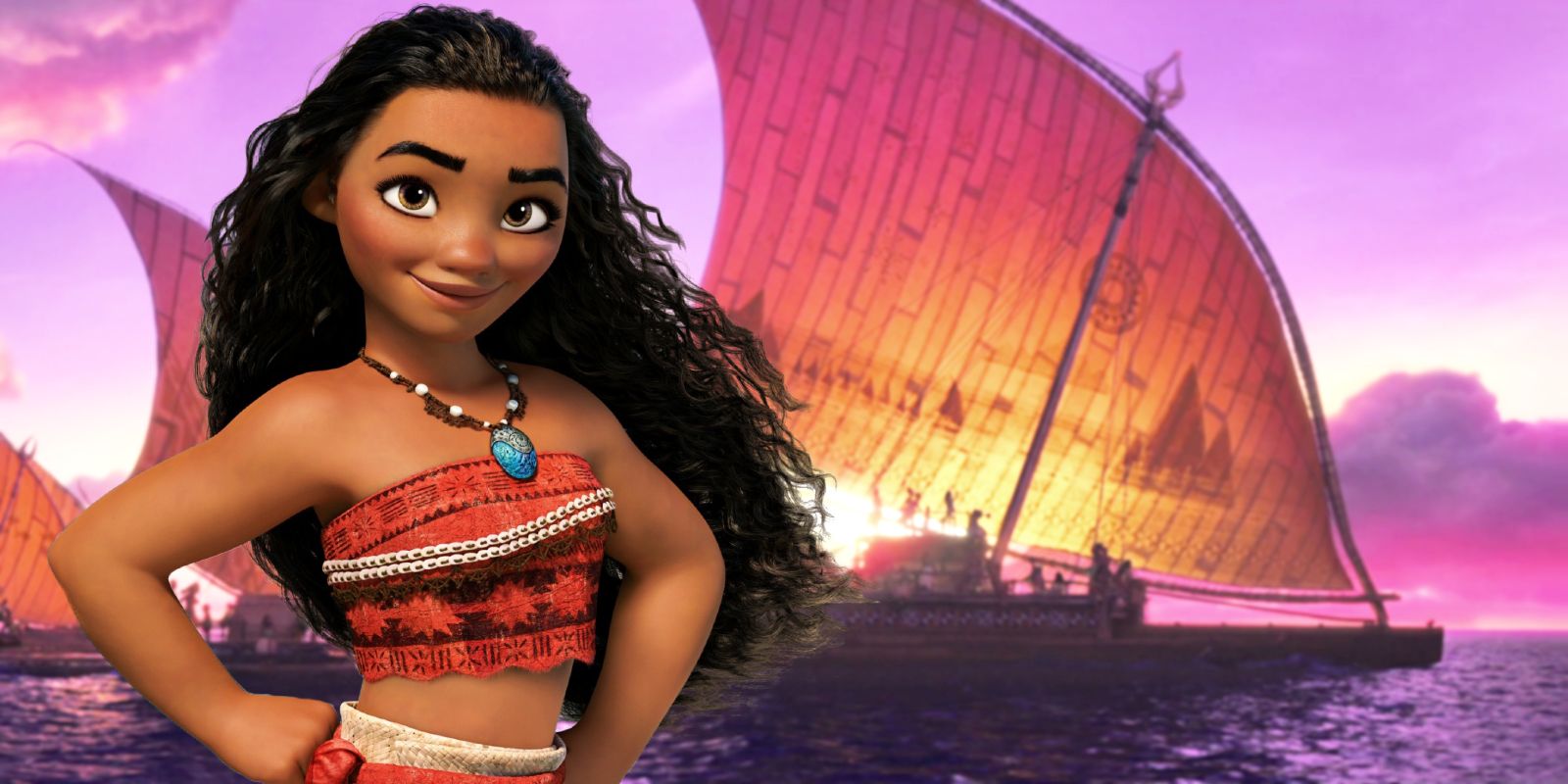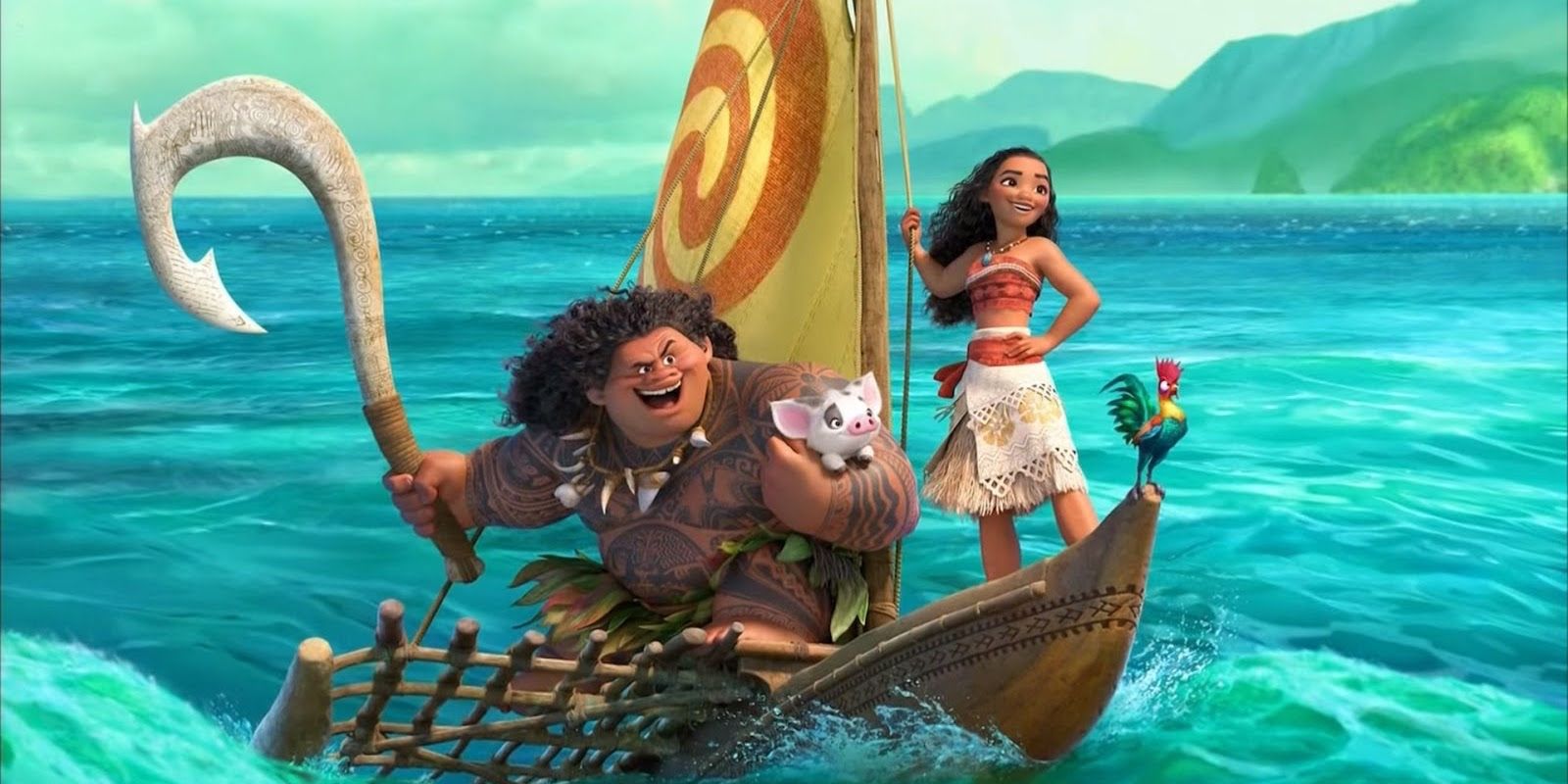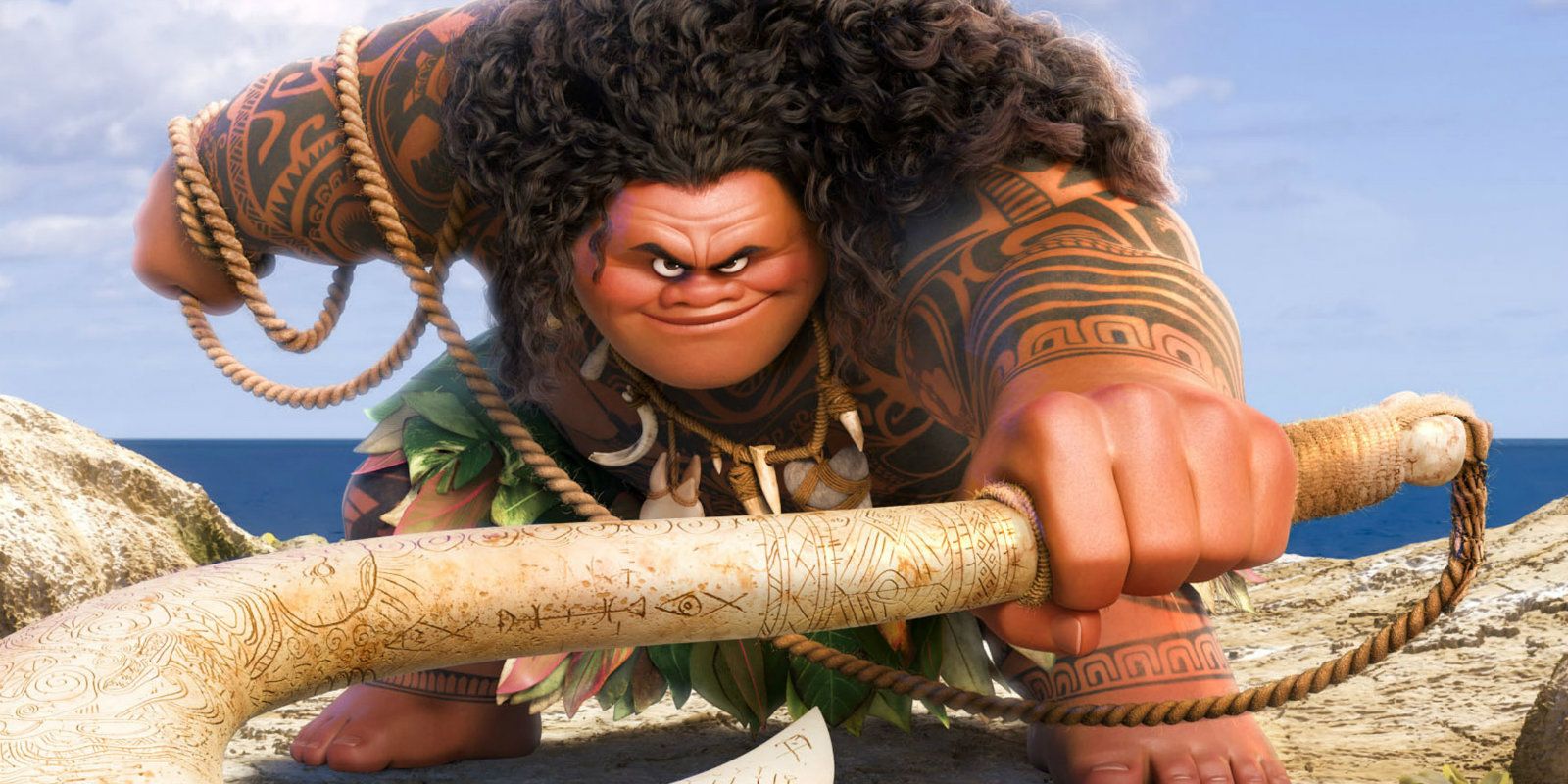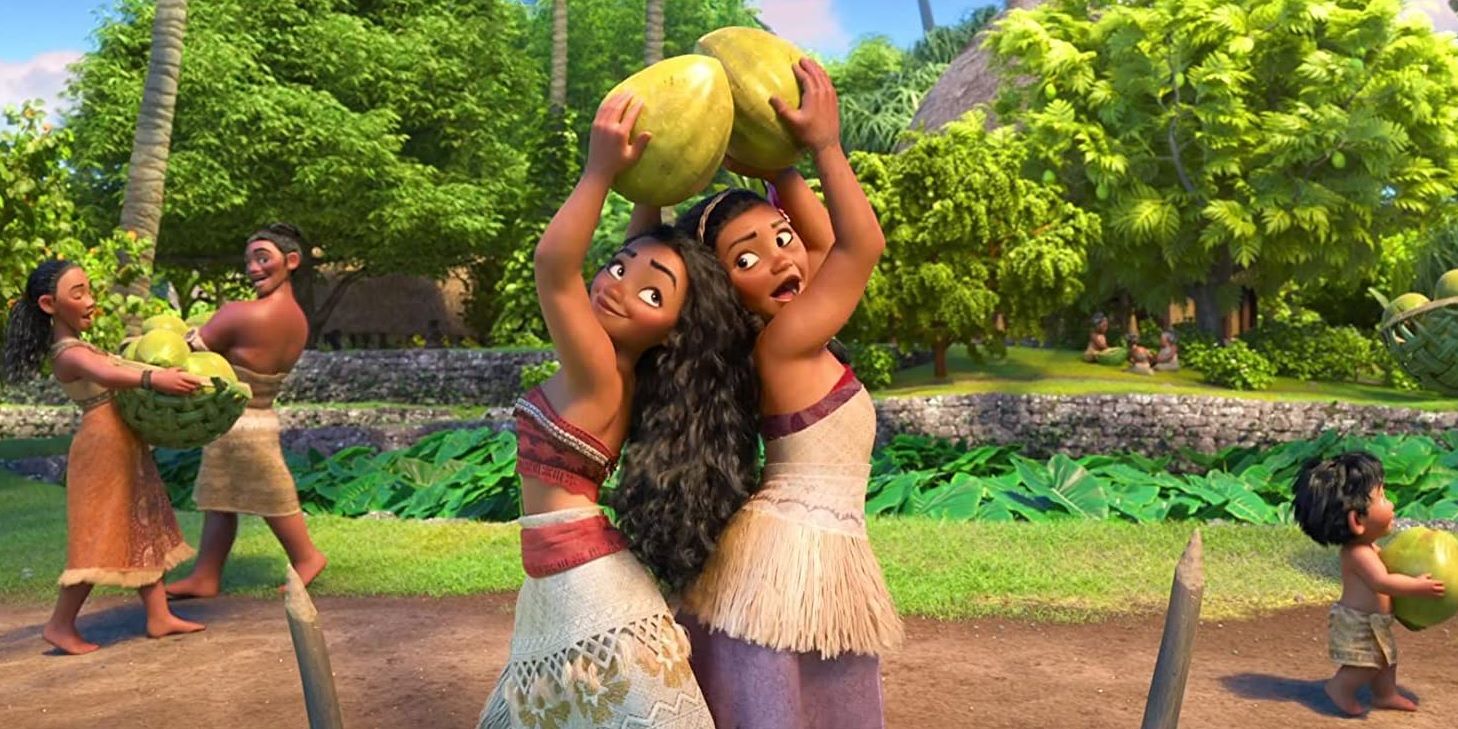
In the enchanting world of Disney's Moana, symbolism plays a powerful role in the narrative, deepening the audience's understanding of the story's themes and characters. From the shining sail of Moana's canoe to the intricate tattoos on Maui's skin, each symbol carries a unique significance, shedding light on the characters' journeys, relationships, and personal growth. Through these symbolic elements, Moana takes its audience on a captivating visual and emotional exploration, reminding us of the power of symbolic representation in storytelling.

What symbols are used in the Disney movie Moana and what do they represent?
In the Disney movie Moana, several symbols are used throughout the story to represent different aspects and themes. These symbols help to enhance the storytelling and provide deeper meanings to the characters and their journeys. Here, we will discuss some of the key symbols used in the movie and what they represent.
The first symbol we encounter in Moana is the ocean itself. The ocean represents both a physical and metaphorical barrier for Moana, the film's protagonist. It separates her island from the rest of the world and poses a challenging obstacle that she must overcome. However, the ocean also serves as a symbol of Moana's connection to her ancestors and the call to adventure that she feels from within. It represents the destiny that she is destined to fulfill and her connection to her people.
Another important symbol in the movie is the heart of Te Fiti, an ancient stone that possesses the power to create life. This symbol represents the life force and harmony of the island of Motunui. When the heart of Te Fiti is stolen, the island begins to wither away and lose its beauty. Throughout the movie, Moana's mission is to restore the heart of Te Fiti and bring life back to her island. The heart of Te Fiti symbolizes the importance of preserving and nurturing the natural world, as well as restoring balance and harmony.
Furthermore, the hook of Maui, a demigod and companion of Moana, symbolizes his power and connection to the elements.
The hook allows Maui to shape-shift and control the wind, sea, and other natural forces. It represents his ability to manipulate and navigate the world around him. However, the hook also serves as a symbol of Maui's arrogance and need for validation. Throughout the movie, Maui learns to value his own worth beyond his accomplishments and the approval of others. The hook symbolizes personal growth and the importance of self-acceptance.
Lastly, the tattoos on Maui's body play a significant role in the movie. These tattoos are not just artwork but instead serve as a depiction of Maui's past achievements and experiences. They come alive and move, providing us with a visual representation of Maui's story. The tattoos act as a symbol of identity, honoring Maui's history, and connecting him to his past.
In conclusion, Moana is rich in symbolism, using various objects and elements to convey deeper meanings within the story. The ocean represents the call to adventure and Moana's connection to her ancestors, while the heart of Te Fiti symbolizes the importance of balance and harmony in nature. The hook of Maui represents power and personal growth, and the tattoos on Maui's body serve as a symbol of identity and history. These symbols help to bring the story of Moana to life and provide a greater understanding of the characters and their journeys.

How does the symbol of the ocean interact with the theme of self-discovery in Moana?
In the 2016 Disney film Moana, the symbol of the ocean plays a significant role in guiding the protagonist on her journey of self-discovery. Throughout the movie, the ocean is portrayed as both a literal and figurative force that assists Moana in understanding her true potential and finding her identity.
From the very beginning of the story, the ocean is established as a powerful and mystical entity. It is depicted as a sentient being that chooses Moana as the Chosen One, destined to restore the heart of Te Fiti and save her people. The ocean's selection of Moana highlights her unique connection to the water and foreshadows the pivotal role it will play in her self-discovery.
As Moana embarks on her voyage, the ocean acts as her guide and protector. It provides her with the necessary resources and tools to navigate through treacherous waters and overcome various obstacles. It creates a safe path for her, assisting her in times of need, such as when it parts the waves to allow her to pass through safely. This constant interaction with the ocean reinforces the theme of self-discovery, as Moana learns to trust herself and her instincts.
Furthermore, the ocean also serves as a mirror for Moana's internal struggles and desires. The vastness and depth of the ocean represent the unknown and unexplored parts of Moana's identity. By venturing out into the open water, she is able to confront her own fears, doubts, and limitations. Through her encounters with different sea creatures and challenges, Moana gains a deeper understanding of herself and her purpose.
In addition to its role as a guiding force, the ocean is also a symbol of Moana's heritage and connection to her ancestors. As a navigator and wayfinder, Moana follows in the footsteps of her voyaging ancestors, tapping into their wisdom and knowledge. The ocean becomes a conduit between Moana and her ancestors, bridging the gap between the past and the present. By embracing her lineage and embracing her people's traditions, Moana ultimately discovers her true self and her place in the world.
In conclusion, the symbol of the ocean in Moana serves as a powerful catalyst for the theme of self-discovery. It guides Moana on her physical and emotional journey, providing her with the necessary guidance and protection to overcome challenges. Through her encounters with the ocean, Moana not only discovers her own strengths and abilities but also connects with her heritage and ancestors. Overall, the ocean acts as a symbol of transformation, allowing Moana to find her true identity and fulfill her destiny.

What is the significance of the symbol of the heart of Te Fiti in Moana and how does it drive the story?
In the hit Disney film "Moana," the symbol of the heart of Te Fiti plays a crucial role in driving the story forward. It serves as a powerful and significant symbol throughout the film, representing life, connection, and restoration. The heart of Te Fiti carries not only physical power but also spiritual and emotional significance, serving as a key motivator for the main character, Moana.
At the beginning of the film, we learn about the ancient Polynesian goddess Te Fiti, who possessed the power to create life. Her heart, an emerald-green stone, held the same life-giving power. However, the demi-god Maui stole the heart, leading to the spread of darkness and destruction throughout the ocean.
The heart of Te Fiti represents balance and harmony in the world. Without it, the islands are threatened by a darkness that slowly consumes everything in its path. This symbolizes the delicate balance of nature and highlights the importance of preserving and caring for our environment.
Moana, a young and determined chief's daughter, is chosen by the ocean to find Maui and restore the heart of Te Fiti. Initially reluctant, Moana's internal struggle reflects her own fears and insecurities. However, as she embarks on her journey, the symbol of the heart becomes a guiding force and source of strength for her.
Throughout her journey, Moana encounters various challenges and confronts her own limitations. The heart of Te Fiti serves as a reminder of her purpose and motivates her to persevere. As Moana's bond with the heart strengthens, so does her conviction to return it and save her people. The connection between Moana and the heart highlights the importance of staying true to oneself and never losing sight of one's purpose.
Additionally, the heart of Te Fiti also symbolizes forgiveness and redemption. As Moana faces Maui, they discover that she is the chosen one to return the heart and heal Te Fiti. In this moment, the symbolism of the heart extends beyond physical restoration. It represents the power of compassion, forgiveness, and the ability to heal past wounds.
In the climax of the film, Moana selflessly returns the heart to Te Fiti, banishing the darkness and restoring the world to its former glory. The heart's transformative power signifies the potential for redemption and the ability to overcome even the darkest of circumstances.
In conclusion, the symbol of the heart of Te Fiti in "Moana" holds immense significance to the story. It represents life, connection, balance, and redemption. As the symbol drives Moana's journey, it teaches her valuable lessons about self-discovery, perseverance, and the importance of reconnecting with one's own purpose. Ultimately, the heart of Te Fiti serves as a reminder of the power we all possess to save the world and create positive change.

Are there any cultural or traditional symbols in Moana that are specific to Polynesian culture?
Moana, the 2016 Disney animated film, tells the story of a young Polynesian girl who sets off on a journey to save her people. Throughout the film, there are numerous cultural and traditional symbols that are specific to Polynesian culture. These symbols, which are deeply rooted in the history and traditions of the Polynesian people, help to convey important messages and themes in the movie.
One of the most prominent symbols in Moana is the ancestral connection. In Polynesian culture, the connection between the living and the ancestors is highly significant. This is represented in the film through the character of Moana's grandmother, who acts as a spiritual guide and provides wisdom and guidance from the ancestors. The presence of the ancestors is also portrayed through the use of traditional tattoos, which are depicted as living symbols that move and change as the story unfolds.
Another cultural symbol in Moana is the importance of navigation and wayfinding. Polynesians have a rich tradition of navigating the vast expanse of the Pacific Ocean using only the stars, the wind, and other natural elements. In the film, this tradition is exemplified by the character of Maui, a demigod who possesses the power of navigation. Maui teaches Moana about the art of wayfinding and helps her understand the importance of staying connected to her roots and navigating her own path.
The motif of the ocean itself is also a significant symbol in Moana. In Polynesian culture, the ocean is seen as a living entity with its own spirit and consciousness. It is portrayed as both a source of life and a force to be reckoned with. Throughout the film, the ocean is depicted as a character in its own right, with its movements and actions reflecting the emotions and desires of the people. This symbolizes the strong bond between the Polynesian people and the ocean, as well as the importance of caring for and respecting the natural world.
Lastly, the use of traditional Polynesian music and dance is another symbol in Moana. The film features a soundtrack that incorporates traditional instruments, chants, and melodies that are specific to Polynesian culture. These elements not only add authenticity to the film but also serve to reinforce the cultural and spiritual themes present in the story. The use of Polynesian dance, such as the hula, further enhances the connection to the culture and conveys the importance of movement and expression in Polynesian traditions.
In conclusion, Moana is a film that is rich in cultural and traditional symbols specific to Polynesian culture. From the ancestral connection to the importance of navigation and wayfinding, these symbols help to convey important messages and themes throughout the movie. The presence of the ocean as a living entity and the use of traditional music and dance further reinforce the cultural authenticity and significance of these symbols. Overall, Moana serves as a beautiful celebration of Polynesian culture and its rich traditions.

How does the symbol of the grandmother's necklace in Moana connect the past and the future?
The symbol of the grandmother's necklace in the Disney film Moana serves as a powerful representation of the connection between the past and the future. This intricate piece of jewelry not only holds sentimental value for Moana and her family but also carries a deep cultural significance for the people of Motunui.
The necklace itself is made up of numerous shells and is passed down through generations. Grandmother Tala explains to a young Moana that the shells are representative of all the previous chiefs of Motunui, including their ancestors. This connection to the past is crucial, as it signifies the wisdom, customs, and values that have been passed down through the generations.
Furthermore, the necklace takes on a new significance when Moana embarks on her journey to restore the heart of Te Fiti. As she sets out on her quest, her grandmother's spirit guides her, appearing as a manta ray. The manta ray holds a special place in Polynesian mythology, symbolizing protection and guidance. In this way, the necklace becomes a physical representation of her grandmother's guidance and her ancestors' presence on her journey.
Throughout the film, the necklace becomes a source of strength and inspiration for Moana. It reminds her of her duty to her people, the importance of following her own heart, and the courage to face the challenges that lie ahead. When Moana doubts her abilities and questions her purpose, she looks to the necklace for reassurance and finds solace in the connection it represents.
In the climactic scene of the film, Moana faces off against the lava monster Te Ka, who turns out to be Te Fiti herself, corrupted by the loss of her heart. Despite feeling helpless and overwhelmed, Moana remembers the lessons of her grandmother and the power of her ancestry. She musters up her courage and sings the film's anthem, "How Far I'll Go," as she realizes the truth behind her necklace and her role as a wayfinder.
In this moment, Moana literally becomes the bridge between the past and the future. She restores Te Fiti's heart, reintroduces balance to the world, and fulfills her role as the chosen one. Through her actions, Moana honors her ancestors' legacy while also shaping the future of her people.
The symbol of the grandmother's necklace in Moana is a poignant reminder that our past and our ancestry shape who we are while also providing a guide for our future. It represents the connection between generations, the importance of heritage and tradition, and the role we all play in carrying forth the wisdom and values of those who came before us.
Furthermore, the necklace serves as a reminder that we are never truly alone. Our loved ones, both past and present, are with us in spirit, offering guidance and support as we navigate the challenges of life. It is through embracing our heritage and drawing strength from our ancestry that we can find the courage to embark on our own unique journeys and shape a future full of hope and possibility.
In conclusion, the symbol of the grandmother's necklace in Moana beautifully illustrates the connection between the past and the future. It represents the wisdom and values passed down through generations, the guidance of our ancestors, and the power to shape our own destinies. Through Moana's journey, we are reminded of the importance of embracing our heritage, drawing strength from our ancestry, and forging a path that honors both the past and the future.










